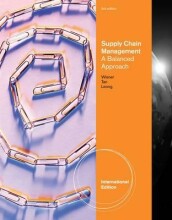Generating random variate - General approaches to generating random variate
11 important questions on Generating random variate - General approaches to generating random variate
What is the inverse transform method for discrete x
2) Detemrine the smallest positive integer I such that U <=F(x1)
3) return X = x1
What are the advantages and disadvantages of the inverse transform approach
+ Ease of generating from truncated distributions
1) Generate U ~ N(0.1)
2) Let V = F(a) + [F(b)-F(a)]U
3) Return X - F^-1(V)
+ Can be useful for generating order statistics
1) Generate V ~ Beta(i,n-1+1)
2) Return X - F^-1(V)
- Continuous: the need to evaluate F^-1(U) (if it is not a closed form expression)
- For a given distribution, the inverse-transform may not be the fastest way to generate the corresponding random variate.
Which assumptions are needed for using the inverse transform method for a continuous distribution?
2) The distribution is invertible on its domain
(x is continuous and F is continuous strictly increasing)
- Higher grades + faster learning
- Never study anything twice
- 100% sure, 100% understanding
Give 4 other methods for generating random variates than the inverse-transform method
2) Convolution method
3) Methods relying on special properties
4) Acceptance-rejection method
What is the composition method
Assume that for all x, F(x)= som of pj*Fj(x)
Algorithm
1) Generate a positive random integer J such P(J=j) = pj
2) Return X with distribution function Fj
What is the convolution method
Algorithm
1) Genrate Y1,Y2,...,Ym IID each with distribution function G
2) return X = Y1+Y2+...+Ym
What is the differendce between the composition method and the convolution method?
Convolution: assume random variable x can be represented as a sum of other random variables
What is the acceptance-rejection method
2) let t(x) be majorizing function t(x) >= f(x), a<=x<=b
3) let c be integral of t(x) over [a,b]; c>=1
==> then r(x) = t(x)/c is density
Algorithm
1) Generate a random variate Y with density r(x)
2) Generate a random number U ~ N(0,1)
3) if U<F(Y)/t(y) return X = Y (accept0
otherwise , try again (reject): step 1
Which assumptions are made for the Acceptance-rejection method
* Uses two or more random numbers per random variate
* Does not use cummulative distribution or its inverse
What has the inverse transform method, the compostion method and the convolution method in common?
What are the selection criteria for a method for generating random variates?
* Efficiency: large number of samples
* Complexity: Understanding and implementation
* Robustness: with respect to parameter ranges
* One-to-one with random numbers: for variance reduction techniques
The question on the page originate from the summary of the following study material:
- A unique study and practice tool
- Never study anything twice again
- Get the grades you hope for
- 100% sure, 100% understanding































